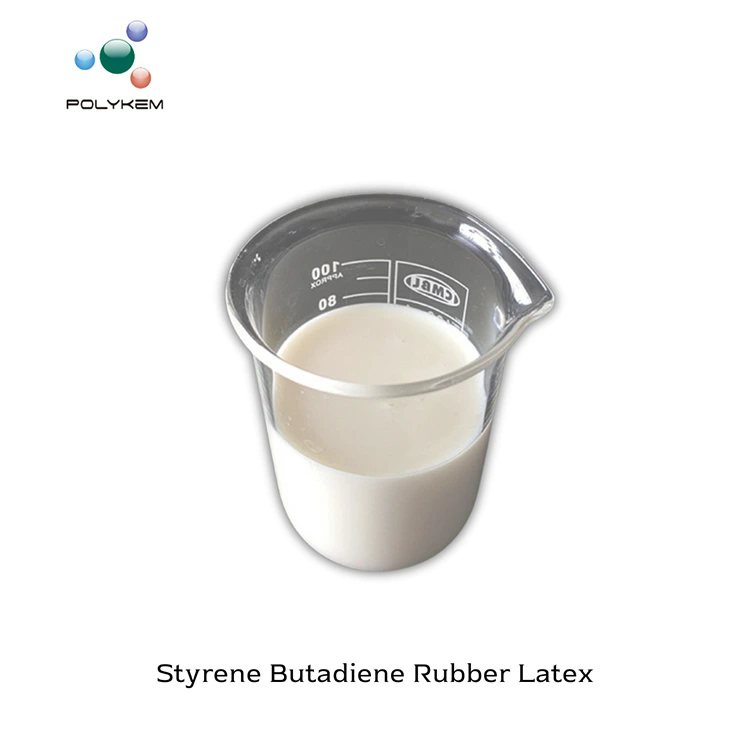Synthetic Rubber: A Versatile and Essential Material
2025-03-05
In the world of manufacturing, construction, automotive, and many other industries, synthetic rubber plays a vital role. Synthetic rubber is a man-made material that mimics the properties of natural rubber, but offers enhanced durability and versatility. It is a key component in a wide variety of products we use every day, from car tires to medical devices. In this blog, we will explore what synthetic rubber is, its types, applications, and the benefits it provides across various industries.
What is Synthetic Rubber?
Synthetic rubber is a type of rubber that is made from petroleum-based raw materials, such as monomers, which are chemically polymerized to create rubber-like materials. Unlike natural rubber, which comes from the latex sap of rubber trees, synthetic rubber is manufactured in controlled environments, allowing for more consistent properties and the ability to tailor its characteristics to suit specific needs.
The development of synthetic rubber began in the early 20th century, driven by the demand for alternatives to natural rubber, especially during times of scarcity. Today, synthetic rubber has become indispensable in a range of industries due to its unique properties, which can be customized depending on the type of polymerization process and additives used during production.
Types of Synthetic Rubber
1. Styrene-Butadiene Rubber (SBR)
One of the most commonly used types of synthetic rubber is Styrene-Butadiene Rubber (SBR). It is made by polymerizing styrene and butadiene monomers together and is widely used in the manufacturing of tires, footwear, and various industrial products. SBR is known for its excellent abrasion resistance, aging stability, and versatility, making it ideal for a wide range of applications.
2. Butyl Rubber (IIR)
Butyl rubber is created through the polymerization of isobutene and a small amount of isoprene. This type of synthetic rubber is known for its excellent impermeability to gases and liquids, making it a popular choice for inner tubes, seals, and gaskets. It also offers good chemical resistance, making it suitable for use in industries such as automotive and pharmaceuticals.
3. Nitrile Rubber (NBR)
Nitrile Rubber, or NBR, is made by polymerizing butadiene and acrylonitrile. It is highly resistant to oils, fuels, and other chemicals, making it ideal for applications in the automotive, oil, and gas industries. NBR is commonly used in the production of seals, o-rings, fuel hoses, and gaskets due to its ability to withstand harsh chemical environments.
4. Ethylene Propylene Diene Monomer (EPDM)
EPDM rubber is made from the polymerization of ethylene, propylene, and a diene monomer. It is known for its excellent resistance to weathering, UV radiation, and ozone, making it ideal for outdoor and roofing applications. EPDM is commonly used in automotive weather seals, electrical cable insulation, and roofing materials.
5. Chloroprene Rubber (CR)
Chloroprene rubber, commonly known as Neoprene, is a synthetic rubber that is made by polymerizing chloroprene monomers. It offers a unique combination of flexibility, strength, and chemical resistance. Neoprene is widely used in wetsuits, gaskets, electrical insulation, and automotive components.
6. Silicone Rubber (VMQ)
Silicone rubber is made by polymerizing siloxane monomers and is known for its exceptional heat resistance, flexibility, and electrical insulation properties. It is commonly used in high-temperature applications such as gaskets, seals, medical devices, and kitchenware. Silicone rubber is also highly resistant to UV radiation, ozone, and aging, which makes it ideal for outdoor applications.
Applications of Synthetic Rubber
1. Automotive Industry
The automotive industry is one of the largest consumers of synthetic rubber. It is used in the production of tires, hoses, seals, belts, and gaskets. Synthetic rubber’s durability, heat resistance, and ability to withstand the wear and tear of high-performance vehicles make it essential for creating reliable, long-lasting automotive components.
2. Footwear and Fashion
Synthetic rubber is also widely used in the footwear industry for making soles, uppers, and other components of shoes. It is often preferred for its flexibility, durability, and cost-effectiveness. In addition to footwear, synthetic rubber is used in various fashion items, such as accessories, bags, and clothing due to its versatility and wide range of available finishes.
3. Medical Devices
In the medical industry, synthetic rubber plays a crucial role in creating products like gloves, catheters, and seals for medical equipment. Its ability to be easily sterilized, as well as its durability and flexibility, make it an ideal material for applications that require strict hygiene and reliability.
4. Construction and Roofing
Synthetic rubber is widely used in the construction industry, especially for roofing membranes, seals, and waterproofing applications. EPDM rubber, in particular, is used extensively for roofing systems due to its ability to withstand harsh weather conditions and resist UV degradation. Synthetic rubber also finds applications in caulking, gaskets, and expansion joints in construction projects.
5. Oil and Gas Industry
The oil and gas industry relies on synthetic rubber for making seals, gaskets, and hoses that can withstand extreme temperatures, pressure, and exposure to oils and fuels. Nitrile rubber is particularly valued for its resistance to oil and chemical degradation, making it ideal for use in oil rigs, pipelines, and other equipment used in harsh conditions.
6. Consumer Goods
Synthetic rubber is found in a wide range of consumer goods, including toys, electrical insulation, sporting equipment, and household items. Its adaptability, cost-efficiency, and strength make it a go-to material for products that need to be flexible, durable, and resistant to wear.
Benefits of Synthetic Rubber
1. Customization
One of the greatest advantages of synthetic rubber is its ability to be customized. Depending on the application, manufacturers can adjust the chemical composition, additives, and processing techniques to create rubber that meets specific performance requirements. This customization ensures that synthetic rubber can perform optimally in various conditions.
2. Cost-Effectiveness
Synthetic rubber is generally more affordable to produce than natural rubber, which makes it a more cost-effective option for many industries. With synthetic rubber, companies can meet the demand for rubber products without relying on natural resources or dealing with the fluctuations in supply and prices of natural rubber.
3. Enhanced Performance
Synthetic rubber often offers superior performance in specific applications. For example, it can be formulated to be more heat-resistant, oil-resistant, or weather-resistant than natural rubber. This allows it to perform better in extreme conditions and offers a longer lifespan for products.
4. Sustainability
While synthetic rubber is made from petroleum-based materials, the ability to customize it for specific applications allows manufacturers to design products that last longer, require less maintenance, and are recyclable. Additionally, synthetic rubber production can be optimized for reduced environmental impact, leading to more sustainable manufacturing practices.
Conclusion
Synthetic rubber is an indispensable material in today’s world, offering a wide range of benefits across industries. From automotive components to medical devices, construction materials to consumer goods, synthetic rubber’s versatility, durability, and cost-effectiveness make it an essential part of modern manufacturing. As industries continue to innovate and evolve, synthetic rubber will remain a crucial material for creating products that are not only functional but also designed to meet the ever-changing needs of society.



